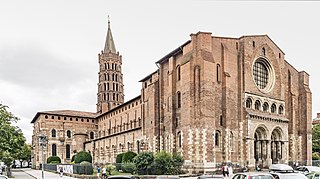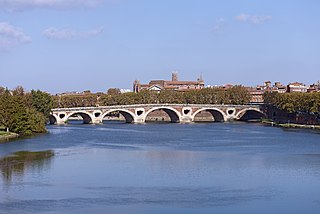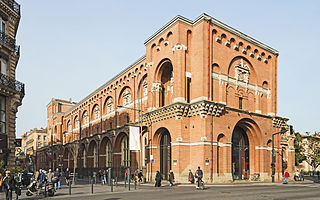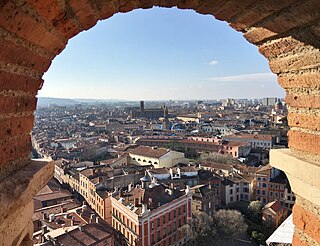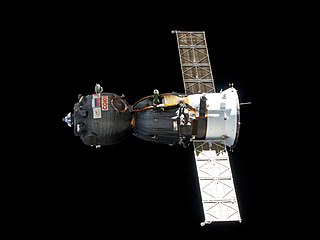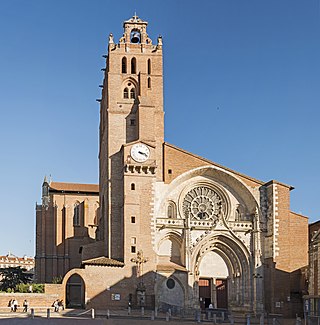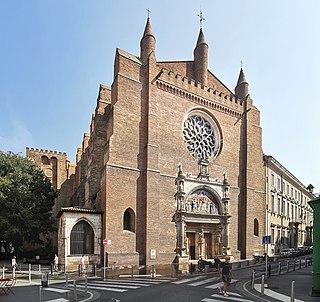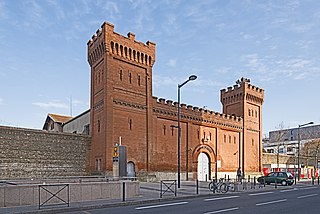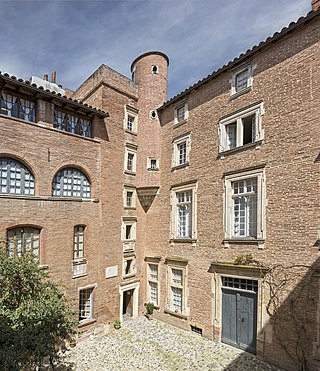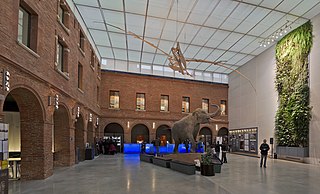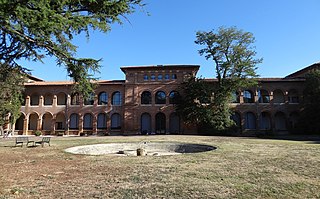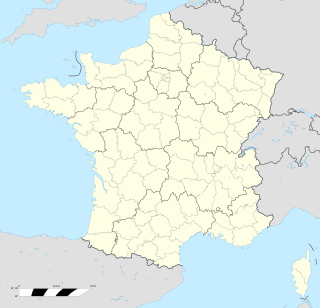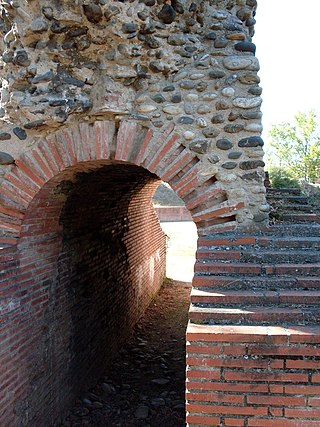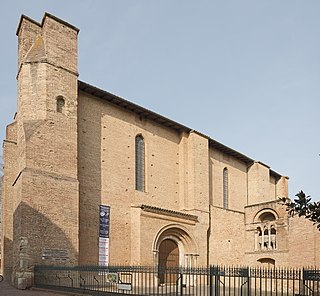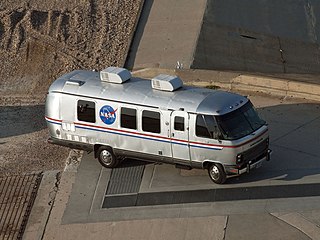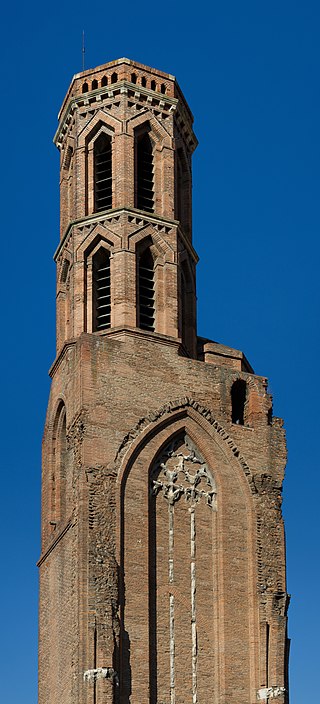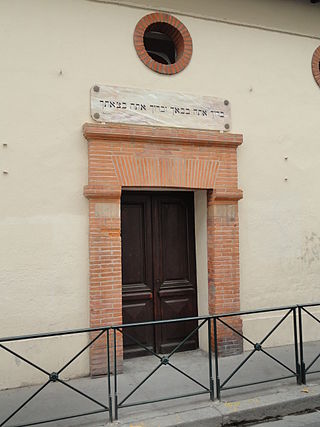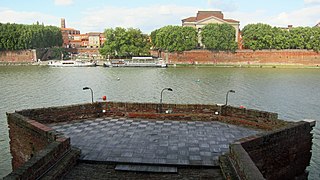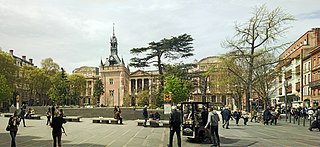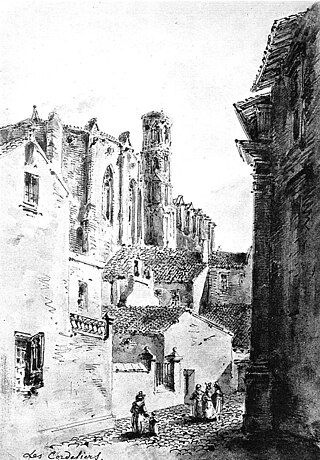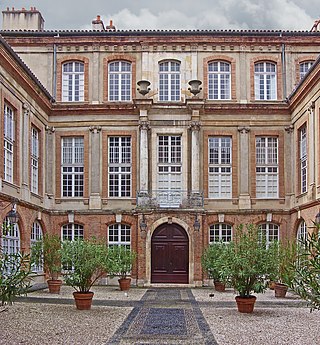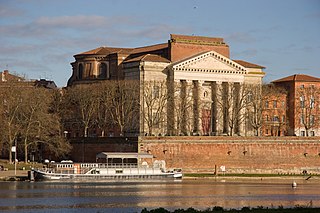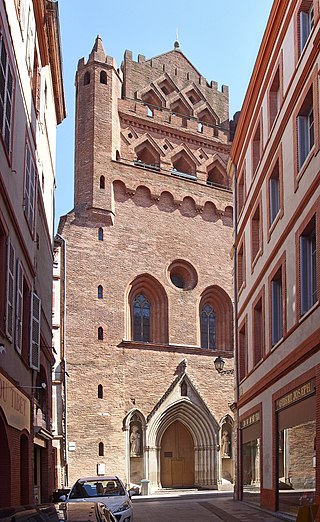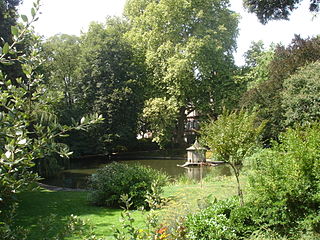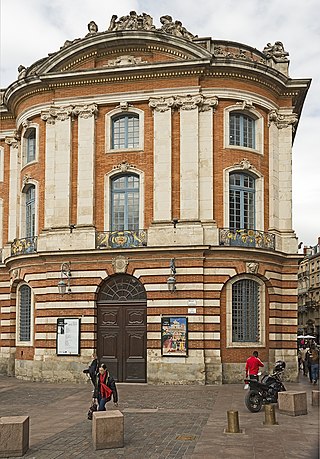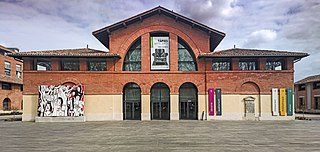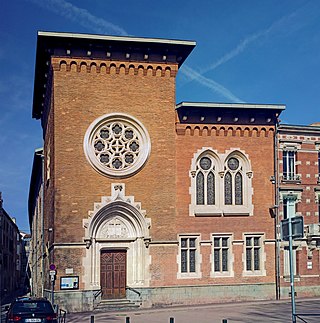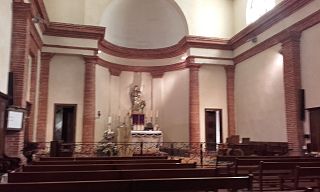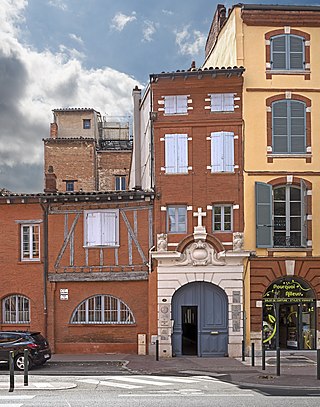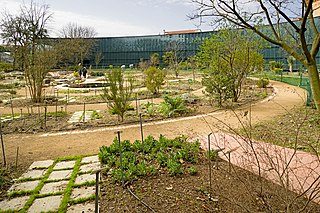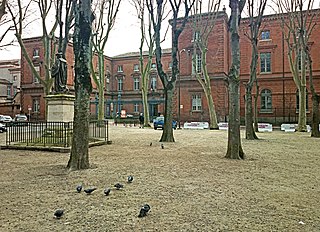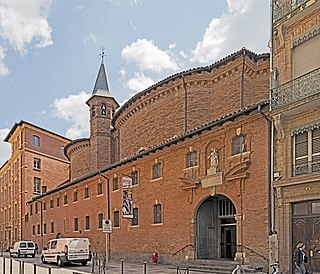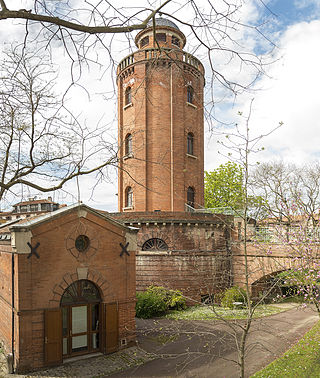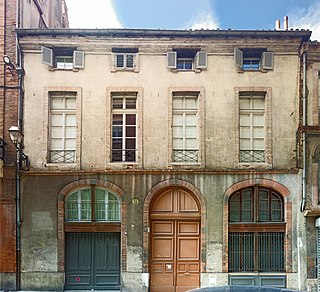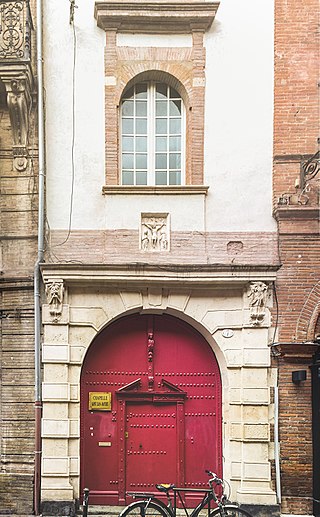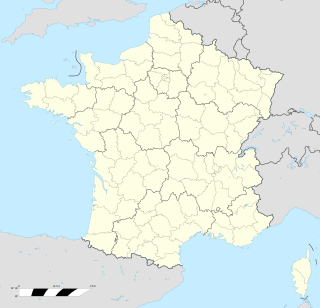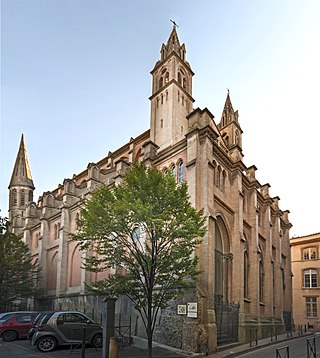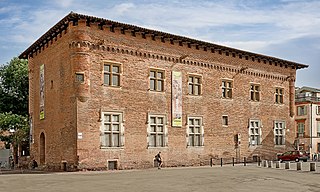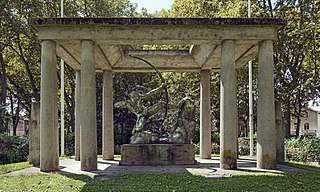43 Sights in Toulouse, France (with Map and Images)
Legend
Premium Sights
Book tickets, guided tours and activities in Toulouse.
Guided Free Walking Tours
Book free guided walking tours in Toulouse.
Welcome to your journey through the most beautiful sights in Toulouse, France! Whether you want to discover the city's historical treasures or experience its modern highlights, you'll find everything your heart desires here. Be inspired by our selection and plan your unforgettable adventure in Toulouse. Dive into the diversity of this fascinating city and discover everything it has to offer.
Sightseeing Tours in ToulouseActivities in ToulouseThe Basilica of Saint-Sernin is a church in Toulouse, France, the former abbey church of the Abbey of Saint-Sernin or St Saturnin. Apart from the church, none of the abbey buildings remain. The current church is located on the site of a previous basilica of the 4th century which contained the body of Saint Saturnin or Sernin, the first bishop of Toulouse in c. 250. The church is particularly noted for the quality and quantity of its Romanesque sculpture. In 1998 the basilica was added to the UNESCO World Heritage Sites under the description: World Heritage Sites of the Routes of Santiago de Compostela in France.
The Pont-Neuf is a bridge in Toulouse over the Garonne River, it connects the Place du Pont-Neuf to the Rue de la République. Built in the sixteenth and seventeenth centuries, it is, despite its name, the oldest bridge in the city crossing the Garonne. The Pont-Neuf was once an entrance to the city, symbolized on the left bank by a triumphal arch bearing an equestrian statue of King Louis XIII.
The Musée des Augustins de Toulouse is a fine arts museum in Toulouse, France which conserves a collection of sculpture and paintings from the Middle Ages to the early 20th century. The paintings are from throughout France, the sculptures representing Occitan culture of the region with a particularly rich assemblage of Romanesque sculpture.
4. Office de Tourisme
Toulouse is the prefecture of the French department of Haute-Garonne and of the larger region of Occitania. The city is on the banks of the River Garonne, 150 kilometres from the Mediterranean Sea, 230 km (143 mi) from the Atlantic Ocean and 680 km (420 mi) from Paris. It is the fourth-largest city in France after Paris, Marseille and Lyon, with 504,078 inhabitants within its municipal boundaries (2021); its metropolitan area has a population of 1.5 million inhabitants (2021). Toulouse is the central city of one of the 22 metropolitan councils of France. Between the 2014 and 2020 censuses, its metropolitan area was the third fastest growing among metropolitan areas larger than 500,000 inhabitants in France.
5. Véhicule Soyouz
Soyuz is a series of spacecraft which has been in service since the 1960s, having made more than 140 flights. It was designed for the Soviet space program by the Korolev Design Bureau. The Soyuz succeeded the Voskhod spacecraft and was originally built as part of the Soviet crewed lunar programs. It is launched atop the similarly named Soyuz rocket from the Baikonur Cosmodrome in Kazakhstan.
6. Les Femmes au Perroquet
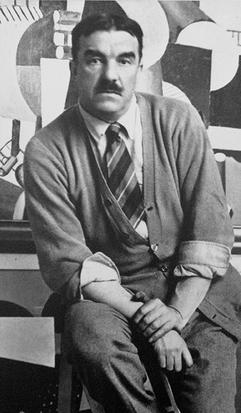
Joseph Fernand Henri Léger was a French painter, sculptor, and filmmaker. In his early works he created a personal form of cubism which he gradually modified into a more figurative, populist style. His boldly simplified treatment of modern subject matter has caused him to be regarded as a forerunner of pop art.
7. Cathédrale Saint-Étienne
Toulouse Cathedral is a Roman Catholic church located in the city of Toulouse, France. The cathedral is a national monument, and is the seat of the Archbishop of Toulouse. It has been listed since 1862 as a monument historique by the French Ministry of Culture.
8. Église Notre-Dame de la Dalbade
The Church of Notre-Dame de la Dalbade is a Catholic place of worship located on rue de la Dalbade in the Carmes district of Toulouse, France. It should not be confused with the Basilica of La Daurade on the quay of the same name. Its current name comes from the old church that preceded it and which was covered with white plaster, giving it the name of Santa Maria dealbata. The current building, which is quite austere from the outside, is typical of southern Gothic architecture.
9. Ancienne prison Saint-Michel
The Saint-Michel prison is a building in Toulouse located at 18bis Grande-rue Saint-Michel on the old road that linked Toulouse to Narbonne, in the Saint-Michel district. It was partly listed as a historical monument by decree of 25 February 2011.
10. Musée du Vieux-Toulouse
The Musée du Vieux-Toulouse presents objects evoking the history of the city of Toulouse, from antiquity to the twentieth century. This museum has been established since 1948 in the Dumay Hotel on Rue du May, in the historic center of the city. It is the property of the Société des Toulousains de Toulouse et Amis du vieux Toulouse.
11. Muséum d'Histoire Naturelle
The Muséum de Toulouse is a museum of natural history in Toulouse, France. It is located in the Busca-Montplaisir neighborhood of the city, houses a collection of more than 2.5 million items, and has some 3,000 square metres (32,000 sq ft) of exhibition space. Its Index Herbariorum code is TLM.
12. Hôpital Psychiatrique Gérard Marchant
The Gérard-Marchant Hospital Center is a departmental public health establishment that caters to the population of Haute-Garonne. More than 1,200 agents monitor 13,165 patients in healthcare facilities throughout the department.
13. Palais Niel
The Palais Niel is the most prestigious residence built in Toulouse during the nineteenth century. It was built for Marshal of France Adolphe Niel between 1863 and 1868. It is located on rue Montoulieu-Saint-Jacques, on the edge of the Allées Forain-François-Verdier and the Square Boulingrin.
14. Los Pès del parpalhòl

Jessica Stockholder is a Canadian-American artist known for site-specific installation works and sculptures that are often described as "paintings in space." She came to prominence in the early 1990s with monumental works that challenged boundaries between artwork and display environment as well as between pictorial and physical experience. Her art often presents a "barrage" of bold colors, textures and everyday objects, incorporating floors, walls and ceilings and sometimes spilling out of exhibition sites. Critics suggest that her work is informed by diverse artistic traditions, including abstract expressionism, color field painting, minimalism and Pop art. Since her early career, they have noted in her work an openness to spontaneity, accident and marginality and a rejection of permanency, monetization and disciplinary conventions that Stephen Westfall characterized as an "almost shocking sense of freedom."
15. Amphithéâtre et Termes Romains de Purpan-Ancely
The Roman amphitheatre of Purpan-Ancely is an archaeological site that preserves the ruins of a Roman amphitheatre, built in the middle of the first century, near a small rural settlement near the important Gallo-Roman city of Tolosa. It is now located at the crossroads of Avenue du Professeur-Guy-Espagno and Avenue des Arènes-Romaines, between the districts of Purpan and Ancely, to the west of Toulouse. It has been classified as a historical monument since 23 October 1974 and placed under the responsibility of the Saint-Raymond Museum in Toulouse. It is one of the only Roman buildings in Toulouse that are practically complete.
16. Auditorium Saint-Pierre des Cuisines
The Church of Saint-Pierre-des-Cuisines, located on Rue de la Boule, next to Place Saint-Pierre in Toulouse, is the oldest church in southwestern France. It is built on an old Gallo-Roman necropolis from the fourth century. It has been classified as a historical monument since 1977 and placed under the responsibility of the Saint-Raymond Museum in Toulouse. Today, it houses a 400-seat auditorium for the Toulouse regional conservatory.
17. Astrovan
The astronaut transfer van, known as the Astrovan during the Space Shuttle era, was a NASA vehicle used at the Kennedy Space Center to transport astronauts from the Operations and Checkout Building to the launch pad before a mission and for launch dress rehearsals, and back to the Operations and Checkout Building following a shuttle landing.
18. Ruines de l'église des Cordeliers
The Church of the Cordeliers of Toulouse is the former church of the Cordeliers convent in Toulouse. It closed after a fire in 1798, then was occupied by the military administration until 1871 when it was ravaged by a new fire. The ruins of this church have been classified as a historical monument since 1862.
19. Cité de l'Espace
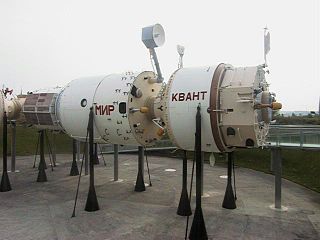
The Cité de l'espace is a scientific discovery centre in France focused on spaceflight. It was opened in June 1997, and is located on the eastern outskirts of Toulouse. It was carried out on the initiative of the Town Hall of Toulouse with the participation of numerous partners such as the Regional Council of Midi-Pyrénées, the Ministries of Equipment, Transport, Defence, National Education, Research and Technology, the National Center for Space Studies (CNES), Météo-France, EADS, Astrium, among others. As of 2012, there had been more than four million visitors.
20. Synagogue
The Palaprat Synagogue is a synagogue in the city of Toulouse, capital of the Occitanie region, in France. It is located at no. 2 rue Jean-Palaprat, from which it takes its name, at the intersection of rue de la Colombette.
21. Pont de la Daurade
The Pont de la Daurade is an old bridge that spanned the Garonne, slightly downstream from the Pont-Neuf in Toulouse. It linked the Faubourg Saint-Cyprien, on the left bank of the river, to the monastery of La Daurade and the church of the same name, on the right bank. It was the second masonry bridge built over the Garonne in Toulouse, after the aqueduct bridge built in the Gallo-Roman period in the first century. It was built in the second half of the twelfth century of stone and brick masonry, but frequent flooding led the municipal authorities to gradually replace the brick vaults with wooden frame decks, as they were washed away. The bridge was covered in 1480, which gave it the name of Pont-Couvert.
22. Square du Général de Gaulle
The Square Charles-de-Gaulle is a street in Toulouse, capital of the Occitanie region, in the South of France. The north side of the square, along the rue Lafayette, is more specifically the space of secularism.
23. Vestige de rempart
The Gallo-Roman rampart of Toulouse is a fortified complex located in Toulouse, France. When it was built during the High Empire, it encircled the Roman city of Tolosa for more than 3 km long. It was extended by a section along the Garonne during the troubles of the Late Empire. It is the only known rampart in Gaul to use mainly brick and the technique of caissons.
24. Chapelle des Cordeliers
The Convent of the Cordeliers is a former convent of Franciscan monks – or "cordeliers" – in Toulouse, France. It was founded in 1222, in a context of the development of mendicant orders in European cities, and particularly in Toulouse, marked at the beginning of the thirteenth century by Catharism and the Albigensian Crusade.
25. Hôtel de Nupces
The Hôtel de Nupces is a private mansion located at 15 rue de la Bourse, in the historic centre of Toulouse. Representative of the penetration of the classical style in the city, but also an early example of a hotel between courtyard and garden, it was built between 1716 and 1728 for Jean-Georges de Nupces, councillor and then president of the parliament of Toulouse.
26. Basilique Notre-Dame de la Daurade
Notre-Dame de la Daurade is a basilica in Toulouse, France. It was established in 410 when Emperor Honorius allowed the conversion of pagan temples to Christianity. The original building of Notre-Dame de la Daurade was a temple dedicated to Apollo.
27. Église Notre-Dame-du-Taur
Notre-Dame du Taur is a Roman Catholic church located in Toulouse, France. According to legend, the edifice was built on the exact spot where the body of Saint Saturnin (Sernin), patron saint of Toulouse, became detached from the bull that dragged the martyr to his death. The church stands in the rue du Taur between the Capitole and the Basilica of St. Sernin. It has been classified as a historic monument since 1840.
28. Jardin Royal
The Jardin Royal is a public park in the French city of Toulouse. Created in 1754 and re-landscaped in the English style in the 1860s, it is the oldest park in the city and has been designated by the French Ministry of Culture as a "Jardin remarquable". It is located in the southeast area of Toulouse with its main entrance on the corner of Rue Ozenne and Allée Jules Guesde.
29. Théâtre du Capitole
The Théâtre du Capitole de Toulouse is an opera house within the main administration buildings, the Capitole, of the city of Toulouse in south-west France. It houses an opera company, ballet company and symphony orchestra, Orchestre national du Capitole de Toulouse.
30. Les Abattoirs
Les Abattoirs, Musée – Frac Occitanie Toulouse, combines a museum of modern and contemporary art (Musée) and a regional collection of contemporary art (Frac). It is located in the French Occitanie region, in the city of Toulouse. Les Abattoirs keep approximately 3,880 works and objects of all origins. Works of modern and contemporary art range for the oldest from 1934 to 2020, for the most recent acquisitions.
31. Temple du Salin
The Temple du Salin is a Protestant place of worship located on the Place du Salin, in Toulouse. It is located in the former Royal Treasury, a thirteenth-century building that has been remodelled over the centuries. The parish is a member of the United Protestant Church of France.
32. Chapelle Notre-Dame du Férétra
The Saint-Roch-du-Férétra chapel is a chapel located on Place Saint-Roch, ten minutes from the city center of Toulouse, in a working-class district near social housing buildings. It now bears the name of Notre-Dame du Férétra chapel. It is still used for Catholic worship: Mass is celebrated daily in Latin according to the Roman missal of 1962. It depends on the Priestly Society of St. Pius X.
33. Maison Seilhan
The house of Seilhan was given to Dominique de Guzmán during the division of the inheritance of Bernard Seilhan, viguier of the Count of Toulouse, on April 25, 1215. The act is kept in the National Archives. The Seilhan House, which can be visited, presents various artistic works depicting the saints of the Order and memorabilia related to the figure of Henri-Dominique Lacordaire (1802-1861), restorer of the Order in France. It is considered to be the place where the Order of Preachers was founded.
34. Jardin botanique Henri-Gaussen
The Jardin botanique Henri Gaussen is a botanical garden operated by the Université Paul Sabatier at 39 allées Jules Guesde, Toulouse, Haute-Garonne, Midi-Pyrénées, France. It is open weekdays in the warmer months.
35. Palais de justice
The Toulouse courthouse is located in Toulouse, France, between the Place du Salin and the Allées Jules-Guesde. It is made up of a group of buildings built between 1492 and 2008. Part of the Court of Appeal was classified as a historical monument on 8 September 1999; The unclassified part of the Court of Appeal as well as the Assize Court and the Regional Court were registered in 1994.
36. Église Saint-Jérôme
The church of the Sanctuaire Saint-Jérôme, rue du Lieutenant-Colonel-Pélissier, is a church built by the Compagnie royale des Pénitents bleus de Toulouse. It was built in the 17th century by architect Pierre Levesville under Louis XIII, the first French king to join the brotherhood. The Pénitents bleus called on Toulouse's finest artists to decorate their chapel, which didn't suffer too much during the French Revolution.
37. Château d'eau Charles Laganne
The Water Tower is a brick tower located at the junction of the Cours Dillon and the Pont-Neuf, in Toulouse. As its name suggests, the building was originally used for the distribution of water in the centre of the city, but was not strictly speaking a water tower since it did not have a storage tank. It was converted in 1974 into an exhibition space dedicated to photography and is now a very popular place for the people of Toulouse, as well as a high place of culture.
38. Hôtel de la Mamye
The Hôtel de La Mamye or Lamamye is a private mansion located at 31 rue de la Dalbade, in the historic centre of Toulouse. It was built from 1528 for a member of the La Mamye family, a family of Toulouse parliamentarians and remodelled in the middle of the sixteenth century for his descendants, the councillors of the parliament Guillaume de La Mamye and Pierre de La Mamye.
39. Chapelle Saint-Jean-Baptiste
The Saint-Jean-Baptiste chapel is located in the heart of old Toulouse, at no. 7 rue Antonin-Mercié, near the Musée des Augustins. It depends on the parish sector of the Saint-Jérôme church. It should not be confused with the church of the same name in the Sept Deniers district.
Wikipedia: Chapelle Saint Jean-Baptiste (Toulouse) (FR), Website
40. Hôtel des chevaliers de Saint-Jean de Jérusalem
The Priory Hospitaller of Toulouse, called the Hotel of the Knights of St. John of Jerusalem or simply the Hotel Saint-Jean, sometimes referred to as the Hotel de Malte, is a private mansion located at 32 rue de la Dalbade, in the historic center of Toulouse. It is an exceptional collection of late Renaissance and Baroque architecture in Toulouse.
Wikipedia: Hôtel des chevaliers de Saint-Jean de Jérusalem (FR)
41. Église du Gésu
The Church of the Gesù is a former Catholic religious building located in Toulouse. Built in neo-Gothic style by the Jesuits in the nineteenth century, the church was deconsecrated in 2000 and refurbished as an organ concert hall. Located at 22 bis rue des Fleurs, the church is one of the great religious buildings in Toulouse.
42. Musée Saint-Raymond
The Musée Saint-Raymond, Musée d'Archéologie de Toulouse, or more simply Musée Saint-Raymond, formerly the Musée des Antiques, is the archaeological museum of Toulouse opened in 1892. It is located within the walls of the former Saint-Raymond university college dating from the sixteenth century, which adjoins the Saint-Sernin basilica. It preserves and presents archaeological collections from protohistory to the early Middle Ages, mainly from the Celtic, Roman and early Christian periods.
Wikipedia: Musée Saint-Raymond, musée d'archéologie de Toulouse (FR)
43. Héraklès archer
The Herakles Archer is a sculpture by Antoine Bourdelle, located in Toulouse in the Haute-Garonne, Square de l'Héraclès at the crossroads of Boulevard Lascrosses, Allée de Barcelona and Avenue Paul-Séjourné, near the Canal de Brienne.
Share
How likely are you to recommend us?
Disclaimer Please be aware of your surroundings and do not enter private property. We are not liable for any damages that occur during the tours.
